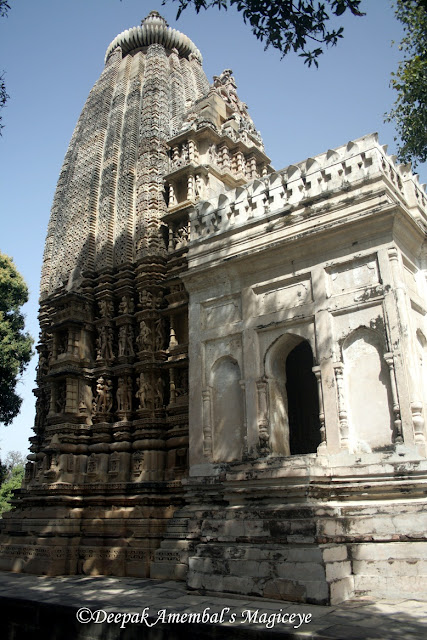“If you don’t spot a tiger, it is your fault. You must have
sinned badly for sure!” is what we were told by the forest guard. It was just
before 3pm, we had just had a wonderful lunch and were out on our first safari
in Bandhavagarh.
Wild boar
Bison
Our first sighting of wild life was a wild boar followed by
a variety of birds and animals but the tiger eluded
Indian roller
Langur
Sambar
us. We did see fresh paw
marks of the elusive animal though and returned wondering who amongst us was
the great sinner!
Fortunately we had
kept one more day for more forays into
the forest hence were not totally disappointed and kept our hopes alive for the
next safari in the morning scheduled for the next day. We had barely entered
the forest when our guide raised his hand and the jeep stopped. He had spotted
some frenetic activity in the jungle which indicated the presence of the
elusive one. The jeep then inched forward and voila, round the
next turning we
saw some jeeps parked and people with their cameras ready to shoot. We joined
the gang and waited, with our cameras ready and holding our breaths in
excitement of what we were to witness.
And there he strode in from the right! From the thick forest
onto the road. Glanced at us nonchalantly and proceeded without another glance to the
pond on the left. Wow! Then there was a scramble to get into position to shoot
him in the pond but he just drank some water, looked around and started back!
There must have been at least 8 jeeps with 5 tourists in
each. Yet, there was pin drop silence and respectful awe at the sight of this
magnificent beast!
Was my first sighting of this regal animal. Felt blessed.
Getting there:
By Air:
Fly from any major city in India to reach Jabalpur which is the nearest airport (173kms) and take a
taxi from there to Bandhavgarh.
By Train:
Umaria is the nearest railhead (68kms) to Bandhavgarh and
well connected to all major cities in India.
By Road:
Bandhavagarh is well connected by State Road Transport buses
and plenty of private buses ply too. Private tour service operators arrange deluxe AC and Non AC
buses to Bandhavgarh from various cities including Jabalpur (177 km) and Nagpur (370
km).








































